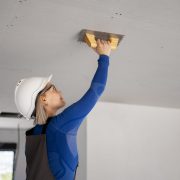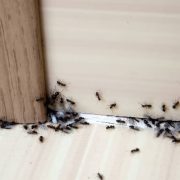When water starts dripping through your ceiling in this tropical city, Ceiling Leakage Repair in Singapore becomes an urgent priority that cannot wait for convenient timing. The island’s relentless humidity and torrential downpours create perfect conditions for structural water infiltration, and what begins as a small stain transforms into catastrophic damage faster than you imagine. This isn’t mainland living where dry seasons offer respite. Here, moisture assaults your property year-round, and ceiling leaks represent serious threats to both property value and living conditions.
Singapore’s Unique Climate Challenges
Let’s confront the environmental reality. Singapore receives over 2,400 millimetres of rainfall annually, with no genuine dry season. The humidity hovers consistently above 80 percent. These conditions stress building materials constantly, accelerating deterioration of waterproofing, corroding metal components, and creating ideal breeding grounds for mould.
The combination proves particularly brutal for ceiling structures. Concrete expands and contracts with temperature fluctuations. Waterproofing membranes degrade under UV exposure. Plumbing systems face constant pressure from high-rise water delivery requirements. When these factors converge, ceiling leaks become not just possible but probable.
According to Building and Construction Authority data, water seepage ranks among the top maintenance complaints in Singaporean residential properties. Both aging HDB flats and newer condominium developments face these challenges. Age matters less than maintenance quality and environmental exposure.
Common Causes in Local Properties
Ceiling leak repair Singapore addresses distinct source patterns shaped by local construction methods and climate conditions:
- Roof waterproofing failurefrom deteriorated membranes unable to withstand tropical sun and rain
- Inter-floor seepagewhere bathroom waterproofing in units above fails, affecting ceilings below
- Air conditioning condensate overflowwhen drainage pipes block or disconnect
- Pipe corrosion and joint failuresaccelerated by humidity and water pressure in high-rise buildings
- Window frame defectsallowing rainwater penetration during heavy storms
- Parapet wall cracksthat channel water into structural cavities
- Gutter blockagesfrom debris accumulation during monsoon seasons
Each source requires different diagnostic approaches and repair methodologies. Misidentify the origin, and your repair investment accomplishes nothing while damage continues accumulating.
The HDB Factor
Housing Development Board flats house the majority of Singaporeans, and these structures face specific ceiling leakage challenges. Older blocks, some exceeding 40 years, show inevitable waterproofing deterioration. Shared plumbing risers mean one unit’s pipe failure can affect multiple neighbours. Common corridor roof issues become collective problems requiring coordinated responses.
HDB’s improvement programmes address some systemic issues, but individual unit owners remain responsible for internal ceiling maintenance. Understanding this responsibility division proves crucial when pursuing ceiling leakage repair in Singapore’s public housing context.
Condominium Complications
Private condominiums introduce different dynamics. Management corporations handle common property waterproofing, but disputes arise regarding responsibility boundaries. Is your ceiling leak caused by rooftop issues under management scope, or by the unit above under individual owner responsibility? These questions delay repairs while damage worsens.
Effective resolution requires understanding Management Corporation Strata Title (MCST) regulations, reviewing architectural plans, and sometimes engaging building surveyors to determine liability. The legal complexity adds layers to what should be straightforward ceiling repair in Singapore’s stratified properties.
The Repair Process
Professional ceiling leak repair in Singapore follows methodical protocols. Contractors begin with comprehensive water tracing, using moisture detection equipment to locate saturation sources. This investigation phase proves critical because visible ceiling damage rarely sits directly below the actual leak point. Water travels along structural elements before manifesting at weak points.
Once sources are identified, repairs proceed in stages. Stop the water ingress first through roof sealing, plumbing repairs, or waterproofing renewal. Allow adequate drying time because sealing moisture inside creates worse long-term problems. Replace or repair damaged ceiling materials. Finally, restore aesthetic finishes.
Rushed timelines compromise results. Proper drying alone requires days or weeks depending on saturation extent and Singapore’s humidity levels. Contractors promising instant complete solutions either handle trivial problems or deliver substandard work.
Cost Considerations
Singapore ceiling leak repairs vary dramatically in cost depending on source complexity and damage extent. Simple plumbing fixes might cost hundreds, while comprehensive waterproofing renewal, structural repairs, and complete ceiling replacement reach thousands.
Get detailed written quotations specifying scope, materials, timelines, and warranty terms. The cheapest quote rarely delivers best value. Quality contractors price fairly for proper work, including necessary investigation, adequate materials, and skilled labour. Bargain options create expensive do-overs.
Selecting Qualified Contractors
Singapore’s competitive market includes excellent professionals and questionable operators. Verify credentials: BCA licensing, verifiable project references, appropriate insurance coverage. Examine past work quality through site visits or client testimonials.
Beware contractors who diagnose without proper investigation, quote suspiciously low, or pressure immediate decisions. Quality specialists assess thoroughly, explain findings clearly, and provide comprehensive written proposals. They stand behind their work with meaningful warranties.
Prevention and Maintenance
Smart property owners in Singapore adopt proactive maintenance schedules. Annual roof inspections catch deterioration early. Regular plumbing system checks identify aging components before failure. Air conditioning servicing prevents condensate problems. Bathroom waterproofing gets renewed every 10 to 15 years.
This preventive approach costs less than emergency repairs and protects property value effectively. In Singapore’s demanding climate, reactive maintenance becomes expensive crisis management. Your ceiling deserves better, and so does your investment in Ceiling Leakage Repair in Singapore.









Comments